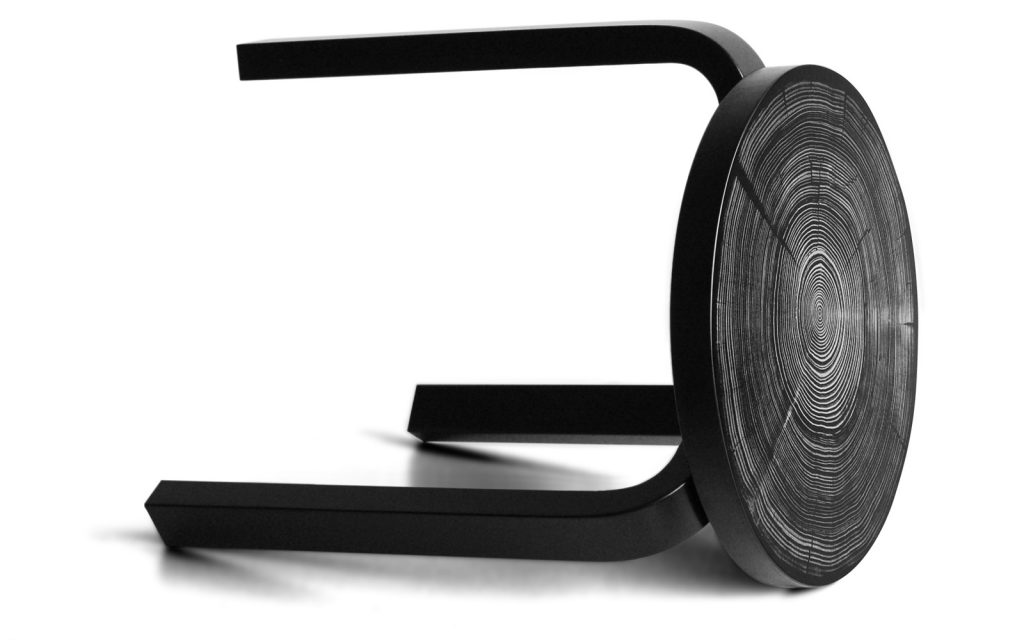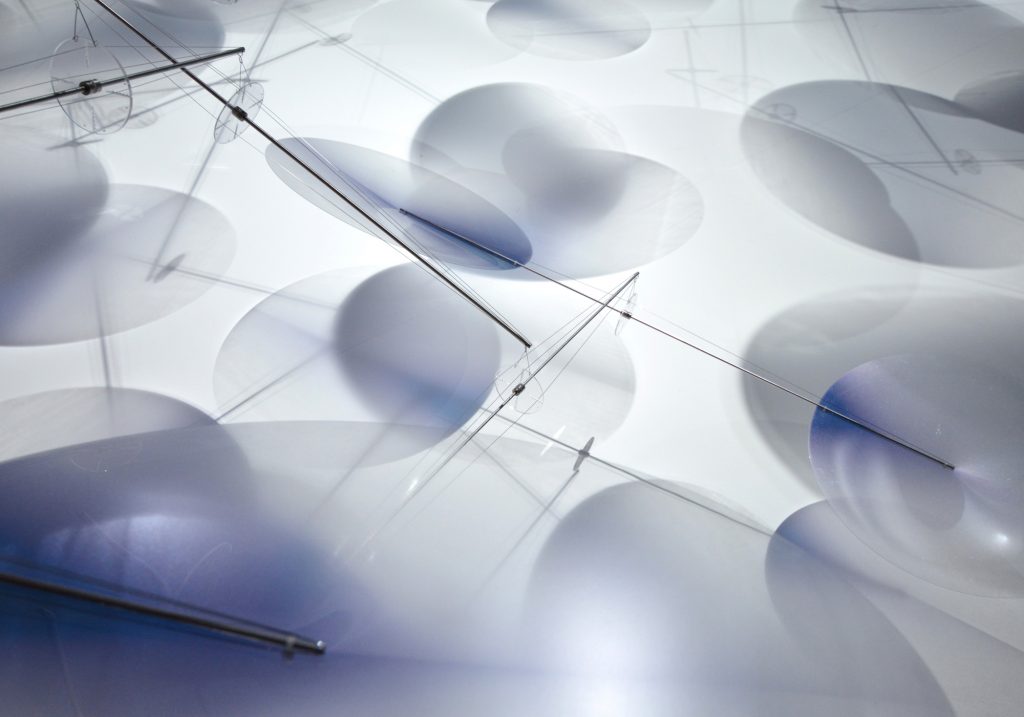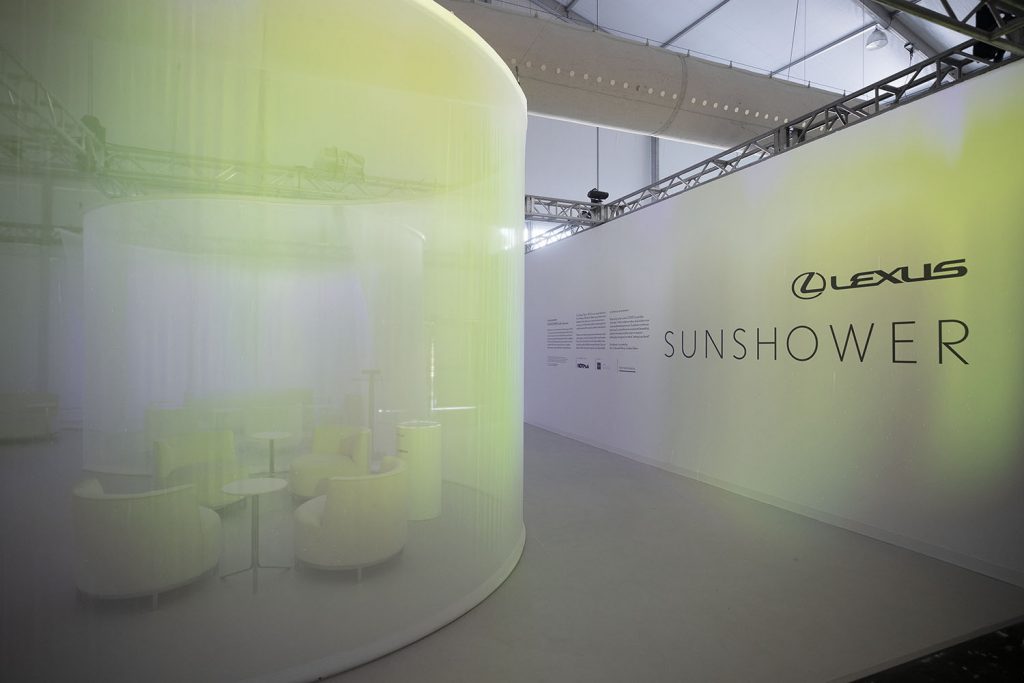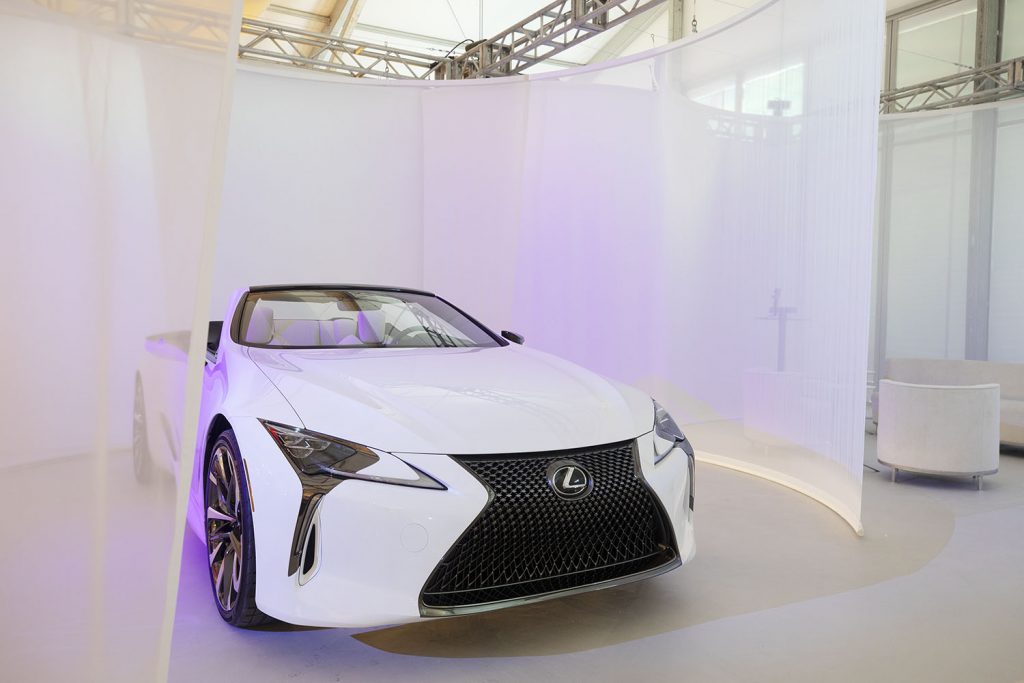Miami Art Week 2019: Speaking With Designer Nao Tamura
The designer’s connection with nature, time and philosophy made her DesignMiami/ oasis possible

During Miami Art Week, works that imbue splendor, surprise and significance bubble to the top and stay with us long after the event. Some of the most memorable include rare moments of calm, a brief respite amidst the chaos of the fairs. One such instance was inside this year’s Lexus booth at DesignMiami/, wherein designer Nao Tamura‘s “SUNSHOWER” created a slightly hidden oasis. The ethereal installation provided seating, power outlets, as well as water and drinks packaged in Ooho—an edible and biodegradable flexible packaging material (imagine a squishy ice cube-sized serving of water that you place in your mouth and gently bite, allowing the contents to come out).
A stark departure from some other works found elsewhere at the fair, “SUNSHOWER” appealed for its sincerity. Harkening back to Lexus’ commitment to omotenashi (hospitality), takumi (artisanship) and engawa (balancing life indoors and out), Tamura’s work aligned seamlessly, and implied a shared history of considered, yet sometimes unexpected, design work. We met with Tamura at her NYC studio to discuss the installation, her formative years in Japan and more.

How, when, and where did you realize that you had this passion and talent for making things?
I was born and grew up in Japan. In my family, everyone was a designer. My dad was a product designer, my mom was an interior designer, my grandmother was a fashion designer, my uncle was a graphic designer, and my other aunt was a fashion designer. It was a creative family, and it was kind of simple: I wasn’t a really good student—that doesn’t mean I did anything bad—and I was awful at math. The only thing I was good at was art.
My very foundation about design is that it can change people’s lives
Choosing this direction was pretty simple. My uncle was the dean of Parsons’ school in Japan. When I was in junior or high school, he kind of mentioned the school and I was interested, and that’s kind of how I got into this world. I studied communication design at Parsons, and I started as a graphic designer. My first job was at Smart Design, right after graduating. I got to know the whole process of how to make products, and that’s why my very foundation about design is that it can change people’s lives.
And I remember my father taking me to Milan Design Week—I was probably in college then. I wanted to show some things. But, like I said, I was studying graphic design. I didn’t know anything about products. I had a concept I wanted to share with people—a project called Seasons, these sort of leaf-like serving plates. That was my very first product design that I did for myself, and it kind of woke up possibilities. All of my projects now somewhat relate to that.

Once you made your first physical product and you kind of took the leap from graphic design to making products, were you hooked?
Because I studied communication design, I like the story—the emotional side of the project was more my focus. The outcome didn’t really matter if it was two or three dimensional. It could be sound. Still now, it doesn’t matter which media, and maybe that’s why I have a kind of range and a diverse range of process.

So much of what brings together the projects that you’ve done and the way you talk about your work is really design thinking. What seems to tie your work together is a philosophy, or a methodology, of looking at a problem, opportunity, or idea as a designer and thinking about it from a different point of view than someone who might be in a different job. For instance, if you compare your Issey Miyake watch to your other projects, they’re so different.
It’s actually funny. When I got contacted, I was very excited. I liked this stuff. I was very familiar with it. I kind of started the project even before I got the brief, and when I met them I had this idea, and it was a little more poetic, more like what he created—more creative and more organic. But, I showed it to them, and they just said, “No.” They wanted the opposite of what Issey Miyake would make. Take away the emotion and the creativity.

And a watch is an interesting product because it’s a functional product but at the same time it is a status symbol—what kind of watch you wear symbolizes your personality and style. And if a male designer designs a watch, it’s hard for them to disconnect that kind of feeling, but because I am a woman I kind of disconnected that emotion completely and focused more on the story side of the plot.
The first question I asked was, “Do we really need a watch?” For me, an iPhone is enough. But, if you end up checking the time, and then text messages and you end up opening up Instagram—you fill all that empty time. [But when I wore a watch] I got the time and started to think about ideas, and it was such a luxury time for me. Back in the day, people used to use this time as a tool to create. That’s how they observed countless discoveries. Now, we’re typing in a question and then you get the perfect answer. You forget that kind of joy and excitement. I was hoping that the watch will be a reminder that time is ticking and the time now will never come back. I was focusing on that message rather styling or form or shape or color.

Much of your work is influenced and inspired by nature. When you talk about your philosophy toward time, it’s really coming down to what matters and what’s pure—and that’s nature. Even though the watch doesn’t have the same kind of warmth or natural material references, a lot of your work does. But, the way you talk about your watch philosophically, it still plays into nature in a really important way.
I think that’s a lot to do with me being Japanese and growing up in Japan. It’s a tiny island, and nature immediately impacts our daily life. We respect nature. We’re very close to what’s happening in nature—and not only the beautiful part; we do have earthquakes and a volcano and tsunamis. We have to be really aware of it. When I use nature as an inspiration, it reminds me of my responsibility to this planet. Nature is an international language, and I find it cool to communicate with everyone in the world.

You’ve lived in New York for so long. How do you balance the New York influences and the Japanese influences?
The fact that I’m outside of Japan, I see what’s good in Japan even more than I used to. For me, the harmony and balance are very key for my creation. The balance is very key to my creative inspiration. I work in the West, but I am from the East. I am a woman working alone in a male-driven world. Also, for me, balance in my private life and professional life is key. If I kind of get stuck in one, or if I go back to Japan, I think I lose the balance. If I only do products, I probably don’t see what I see now.

Being in Miami then, specifically with your project for Lexus, tell us about the way you approach that. What was the brief? What were your ideas? What was it like doing something with a digital element?
I did a project five or so years ago for Lexus. At the time, I could do everything from scratch: the concept-making, the visual, the everything. I had the control to create. But, this time, when the curators contacted me, they already had the name “SUNSHOWER” and they had this story, which was based on Japanese culture and tradition. My role was to visualize their story through my cultural lens.

Traditional Japanese houses have a wooden deck, and usually the inside and the deck are divided by a see-through paper screen, so that people can see outside in a very abstract way. That’s why I used those curved screens to divide the room. When the weather is nice, you open the screen so that inside can come outside, they say. That place then becomes a place to gather—to connect people with nature. We wanted the booth to connect people together, but also bring in the outside-inside concept.

It was in the middle of such a hectic environment, but it was an oasis. It was just a calm place where people could take a little bit of a break—to have a a bit of distance from the chaos.
It was definitely a very exciting experience to recreate abstract nature. But, because Lexus is technically very accurate, I needed to be accurate. But, I kind of left room for nature to take place. Hopefully that contrast between my organic approach and their perfect style showed chemistry.
Hero image courtesy of Lexus












